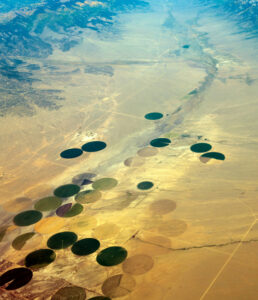The San Luis Valley sits on top of one of the largest aquifers in North America. It holds one billion acre-feet (AF) of water that is completely renewable – this means the water recharges at a rate it renews itself every year.
The RWR project proposes to pump less than 22,000 AF annually from the large, confined aquifer, which is only 2 percent of its annual recharge.
Unlike the unconfined aquifer, which is shallow and is the main supplier of agricultural water for the San Luis Valley, the confined aquifer largely goes untapped.
Modern technology allows us to reach the water in the confined aquifer – at a depth of over 2,000 feet – and improve our way of life for generations to come. If we access the billion-acre foot confined aquifer, we can heal the surface water and the shallow, unconfined aquifer that has been over-tapped for too long.

Overview
- The RWR proposal would develop 2 percent of the annual recharge of the water held in the large, confined aquifer.
- Legal protections are in place to guarantee that more (or equal) water flows into the aquifer each year than is taken out.
- This means the RWR project will have no impact on the aquifer.
- The San Luis Valley is the only place in the state that has a “one-for-one” law. This means that if any water is proposed to be taken out, the equal amount of water must be retired at the same amount.
- Farmers and ranchers are getting competitively paid in exchange for their water rights, 3x the market rate and on a voluntary basis.
- RWR is also creating a Community Fund, which the local community will determine how to allocate and invest it to improve essential services like police, fire, health care, and schools.
- Up to 22,000 acre-feet will be transported to Colorado’s Front Range, helping the state fend off an unavoidable water crisis as the state’s population is expected to double over the next three to four decades.
- Colorado’s Front Range communities that are dependent on nonrenewable, diminishing water supplies — like the Denver Basin aquifer system – could run out of water by 2050. (Most Front Range communities are dependent and over-reliant on nonrenewable sources of water.)
- Because the water is transbasin, the project creates a “multiplier effect,” which is the ability to reuse the water to extinction.
- The pipeline route will follow state highways, resulting in minimal disruption to the land.
- Additionally, Colorado Water Court will ensure that the San Luis Valley sees no impact on current water levels.
